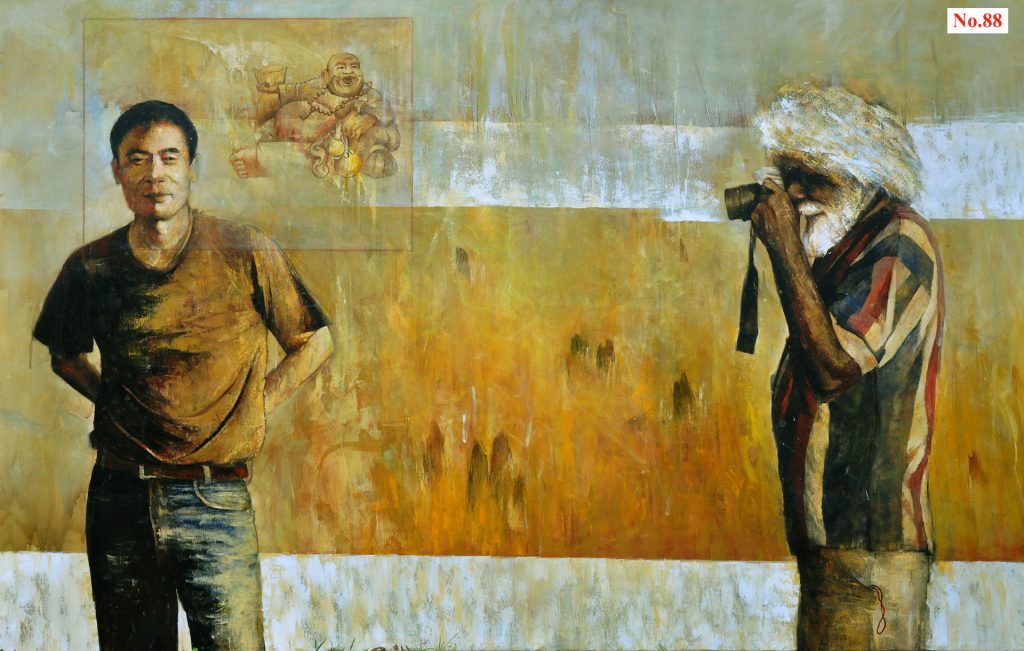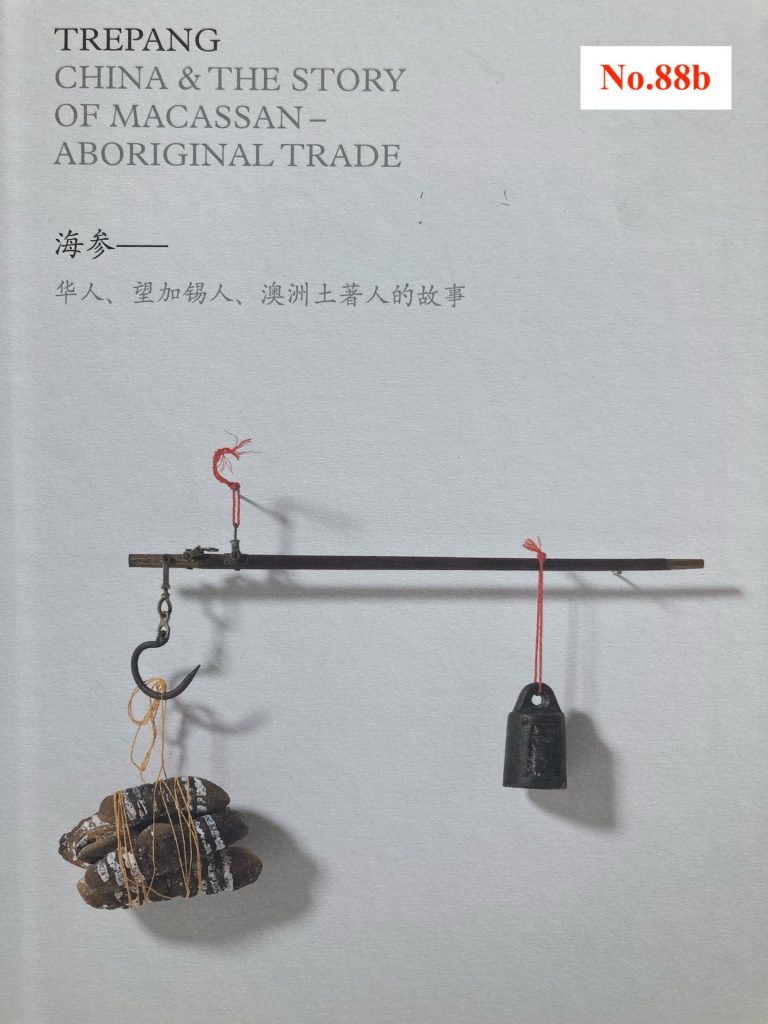
An issue with Chinese Australian history is, despite the efforts of historians and family historians especially over the last 25 years, much of it is still perceived as at best an adjunct to “real” Australian history. At times Chinese Australian history seems to run parallel to Australian history without actually impinging on it. (See No.52) At other times it only serves to highlight specific “exotic” elements to show perhaps that Chinese are people too, or to assist in making moralist judgement on racists past, present and future. All well and good, but not really history and certainly not really informative about the role and significance of Chinese Australians in Australian history.
What has all this to do with a modern Chinese Australian artist collaborating with a contemporary Indigenous artist? On many levels the works of Zhou Xiaoping highlight just how deep the interconnections of Chinese Australians go into Australian history. Most obviously in his own work, but also in his subject matter and finally in reminding us that this interaction with indigenous Australia goes back not only deep into Australia’s post-invasion history but also well before that.
Like another Chinese Australian artist – Shen Jiawei (see No.51) – Zhou Xiaoping uses history as inspiration. In this case the artist has drawn on the long history of Aboriginal/China links. Links that included many interactions between Chinese and Aboriginal Australians on an economic, social and family level (see No.46). Zhou Xiaoping in working with such artists as the late Johnny Bulunbulun extends this collaboration, perhaps for the first time, into the realm of the arts.

One of the most interesting results of this collaboration has been the highlighting of the trepang trade links with China via the Macassan/Aboriginal trade links that stretch back to at least the 18th century. This was achieved without the mythologising and distortion of history that has sometimes been associated with these links – see No.27.
Within Australian history the treatment of Chinese Australians as outsiders is exceeded only by the treatment of Aboriginal Australians. The fact that these two communities have not only been oppressed together but have also worked together and lived together is an essential element of Australian history. An element that needs to be further acknowledged and researched if the paralleling of much of Australia’s history is to end.

